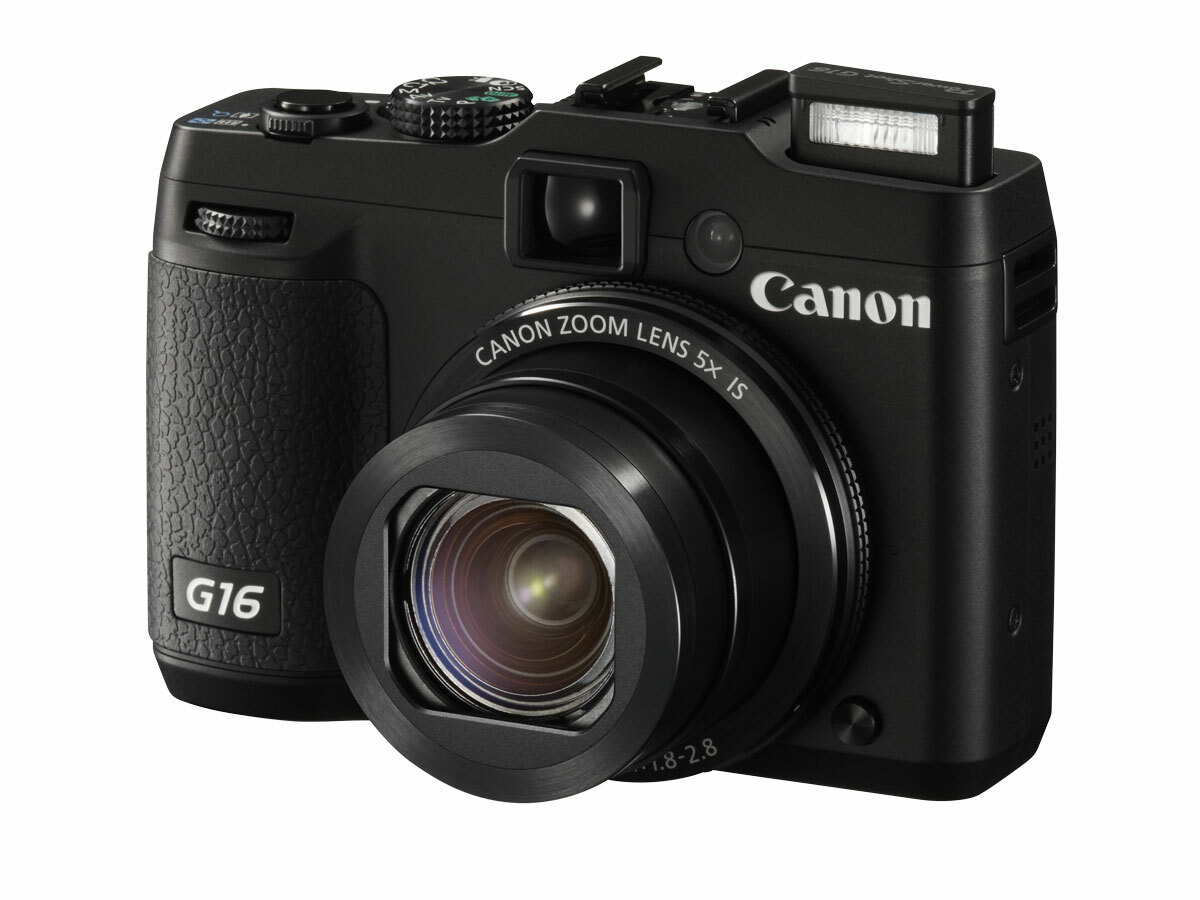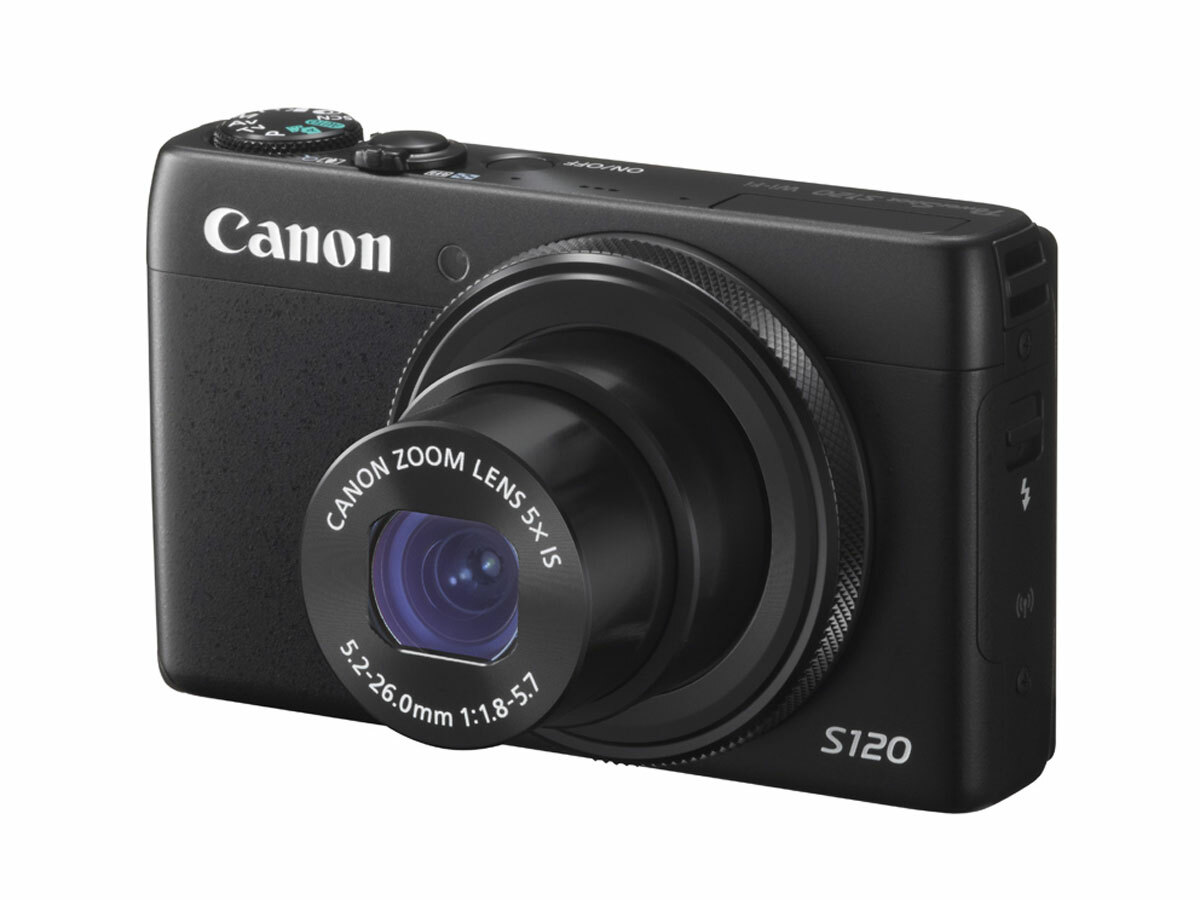Hands-on review: Canon’s awesomely powerful G16 and S120 compact cameras
Call that a photo? This is a photo

Everyone’s a photographer these days, but hardly anyone uses an actual designed-for-the-job camera.
And now, with the likes of the Nokia Lumia 1020 and Samsung Galaxy S4 Zoom making a land grab, the space reserved for compact cameras is getting perilously small.
Canon won’t go quietly: it’s launched updates to its outstanding G- and S-series premium compacts to reclaim some of the lost ground.
The PowerShot G16 and PowerShot S120 come stuffed with app-like filters and features designed to convince trigger-happy types to put down their mobiles and pick up a proper camera.
AIN’T NOTHIN’ BUT A G16 THANG

As with past models, the G16 is the biggie, both in specs and size terms. It keeps the 12.1MP CMOS sensor, super-fast f1.8-2.8 5x zoom lens, proper optical viewfinder and oodles of manual controls from its predecessor the G15, but adds a whole lot more.
For starters, it’s the first G-series cam to feature Wi-Fi, while also gaining two new creative modes, full HD video at 60fps and Canon’s latest DIGIC 6 processor. DIGIC 6 brings with it a raft of improvements including better low-light abilities, faster burst shooting and snappier autofocus.
S120: smaller, but just as mighty

The tote bag-friendly S120 has the same 12.1MP sensor as the G16 and it too now has a bright f1.8 5x zoom lens, up from the f2 effort on the S110. It lacks the G16’s optical viewfinder but, like its predecessor, packs a responsive 3in touchscreen and Wi-Fi, plus a surprising number of manual controls – including ingenious lens control ring – for those who like to do more than just stick it in Auto.
And, like the G16, it gains the two new creative filters, 60fps video and the DIGIC 6 processor.
DIGIC 6 is the secret sauce
It might not sound like a big deal, but DIGIC 6 makes a massive difference. In our hands-on time with both cameras, shots taken at high ISO settings of even 3200 and 6400 (it goes up to 12,800) were impressively noise-free.
More impressive still was their speed. These things really fly, with burst shooting at a stupidly quick 12 frames per second for the first 5 shots dropping to 9fps for the next 500-odd.
No, that’s not a typo – you can basically keep shooting at 9.3fps until you fill a card. Buffering is non-existent. They make a great sound while doing so too – like some kind of digital grasshopper.
DIGIC 6 is also likely behind the video boost, which sees both cameras able to shoot full HD footage at a silk-smooth 60fps – a first for a Canon camera.
night sky skills

More interesting still are the two new creative filters: Star and Background Defocus. Star looks like great fun. We weren’t able to try it out during our hands-on time with the camera (on account of it being midday, and sunny) but it enables snappers to take pics of the night sky in three different ways.
Star Nightscape, as you’d expect, will use the cameras’ impressive low-light abilities to get atmospheric shots of the stars; Star Trails does some clever things with long exposure to get lovely circular trails; and Star Time-lapse takes several short movies then stitches them together for – you guessed it – a time-lapse. The examples we saw looked brilliant.
Background Defocus, meanwhile, lets you blur the background of a pic for that nice bokeh-y effect that’s de rigueur these days. You can dial up or down the extent, and it looks like a useful feature to have. Both cameras also have several other creative filters, including HDR, fish-eye and monochrome, for those who like that kind of thing.
amazingly, this Wi-Fi could be useful
Although Wi-Fi hasn’t been seen on a G-series cam before, we did get it on last year’s S110. We weren’t very impressed with its implementation there, so it’ll be interesting to see if it’s got any better.
It certainly sounds useful at least – connect either camera to a Wi-Fi network anywhere and you’ll be able to sync images (for free) to Canon’s cloud-based image library, then download them later to your home computer. Alternatively, you can register your Mac/PC for the service and sync them directly.
Price and availability
Neither camera comes cheap – but then they are Canon’s premium compacts. The PowerShot G16 will be priced at £530, while the S120 will set you back £450.
They’ll both be available in October, but we’ll have in-depth reviews of them before then, hopefully. Stay tuned to find out what we think of them.



